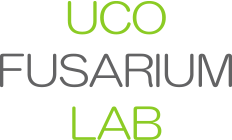
Genetic basis of adaptive evolution
Adaptation is a dynamic evolutionary process increasing competitiveness and survival of an organism in a given environment. Like many fungal pathogens, Fusarium oxysporum can adapt to a wide range of environmental niches such as the soil or living plant and animal hosts. We use a combination of experimental evolution and reverse genetics to follow the dynamics of adaptation in real time and to identify the underlying molecular mechanisms, with a particular focus on the role of transposable elements.

pH control of signaling and pathogenicity
pH regulates fundamental processes in all kingdoms of life. During infection, fungal pathogens often induce a marked alkalinization of the host pH, which leads to an increase in virulence. We previously found that changes in intracellular pH (pHc) lead to rapid reprogramming of conserved signaling modules such as mitogen-activated protein kinases (MAPKs). To elucidate the underlying molecular events, we are studying key components of pHc homeostasis, including the essential plasma membrane ATPase Pma1 or the sphingolipid signaling pathway. Understanding pHc-mediated MAPK regulation could reveal new ways to target hyphal growth, development and infection of fungal pathogens.

Metal ion homeostasis during host infection
Metal ions, such as iron, copper or zinc, are essential inorganic elements for life. All organisms have evolved exquisite regulatory mechanisms to rapidly and specifically respond to metal deficiency or excess. In fungal pathogens, this process is crucial for virulence. We are studying the battle for metal ion acquisition, which takes place during the interaction of Fusarium oxysporum with plant and animal hosts. Our research aims to identify the key regulatory components of metal ion homeostasis, such as sensors and transcription factors, to unravel their role in fungal pathogenicity.

Effector-mediated multi-host compatibility
Vascular wilt pathogens colonize a wide array of plants. In the Fusarium oxysporum species complex, interaction of an individual fungal isolate with a given host plant leads either to vascular wilt disease or to a non-wilting endophytic lifestyle. While host-specific virulence effectors are known to be encoded by unique, lineage specific genomic regions, the genetic basis of multi-host compatibility remains largely unexplored. We have identified a set of Early Root Compatibility (ERC) effectors that are encoded by conserved core genomic regions and secreted during early stages of root colonization. Our goal is to elucidate the molecular function of these ERCs and to understand the mechanisms underlying their specific upregulation in plant roots.

Interactions with other microbes
The interaction with other microbes crucially affects the ability of pathogens to survive in the soil and to colonize plant roots. Relatively little is known about the molecular bases and signaling events controlling self-sensing and crosstalk in microbial communities and how they affect plant health and disease. A key process in microbial communication is quorum sensing (QS), the ability to chemically measure the density of the surrounding population. We have developed sensitive molecular and chemical detection methods for the spatial and kinetic analysis of QS signals and responses. This knowledge will help to develop new approaches to control soilborne plant diseases.





